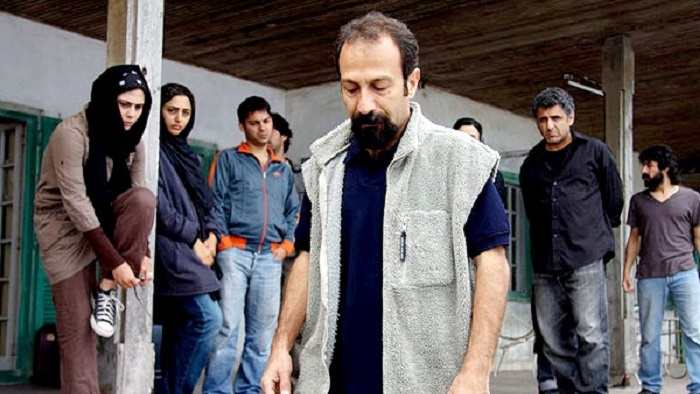For Hardliner Media of Iran, Sky’s the Limit

(Picture: Asghar Farhadi at the backstage of About Eli, 2009).
Afew weeks after it raised fury among the art community of Iran, Lasarat, brash hardliner weekly, has once again created controversy after accusing three of Iran's top cinematic figures of adultery.
It was in late July when following a gathering of Iran's motion picture artists, Lasarat implicitly called the male actors "cuckold", an obscenity in Iranian culture, for the way their wives had dressed up for the occasion.
Though Iranian cinema is used to sharp criticisms for its non-compliance with acceptable hijab boundaries, such strongly-worded slam was something it had never faced. A number of conservative MPs, including head of the parliament's cultural committee, had already objected the appearance of the actresses, yet it was Lasarat who raised the bar in that sense.
The weekly faced a strong wave of backlash coming from the art community a few days later, even from figures such as Shahab Hosseini, this year's Cannes Award Best Actor, who usually keeps silent on social issues. Hossein called them 'comrades of Daesh/ISIS', taking them to task for insulting the cinema community.
Despite punitive measures taken by the Ministry of Culture, such as revoking the weekly's license to publish, reluctance of the ultimate arbiter and executor of press verdicts, the judiciary, to take further steps and punish Lasarat, proved only to make the weekly more belligerent.
The latest case of Lasarat attack, published on September 3rd, targeted three of Iran's best-known cinema celebrities: 2012 Academy Awards winner Asghar Farhadi, Iran's leading female actress –and vocal feminist- Taraneh Alidoosti, and actor/director Mani Haghighi. The accusation: Farhadi, married to a fellow female director, had a secret affair with Taraneh Alidoosti for years, before Mani Haghighi entered as 'the other man'. Lasarat called this a "dirty" "love triangle".
The story, with its diligently detailed descriptions, revolves around a heavy charge, i.e. adultery, that if unproved, could bring heavy penalties for the claimant. Yet, as the case with the notorious "cuckold" piece, Lasarat proved smart enough not to leak any direct evidence towards the accused. In that case, Lasarat had taken advantage of the human tendency to associate, embedding the "cuckold" text box at the center of a photo album displaying 'mal-veiled' artists without clarifying the link between the two. In its slander against the three Iranian artists, the story's hints leave no doubt which actors and actress the piece is speaking of. But no names are mentioned.
Though reactions to this piece were intense, they were limited to social media this time, and not official outlets. Twitter users expressed surprise with the level of audacity Lasarat had attacked Farhadi, Alidoosti, and Haghighi. Many called the text 'sleazy', its author 'dirty-minded', while a number of other users asked about the limits of freedom of speech and if it could be applied to every media. Even a pro-Ahmadinejad figure reacted strongly to the piece, calling it "hideous" so much so that "one could not find a similar piece even in sordid magazines published during the [socially liberal days of] Mohammad-Reza Shah."
It could not be said with certainty if limited reactions to Lasarat's latest attack were because it had created a shock yet to be overcome, or because its targets were limited –unlike the previous one which attacked the whole art community, or because many preferred to let the sleeping dogs lie, but one thing is for sure: as long as no strict action is taken against Lasarat such type of vitriol will run it its pages, every week.
IRD/66

